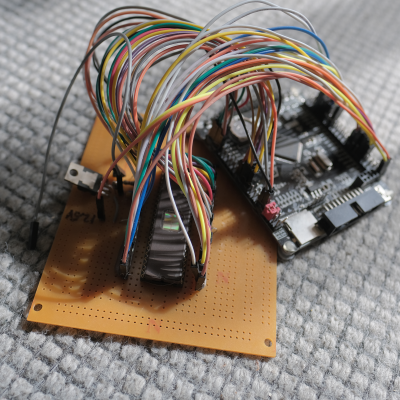Supercomputers are always an impressive sight to behold, but also completely unobtainable for the ordinary person. But what if that wasn’t the case? [bitluni] shows us how it’s done with his 256-core RISC-V megacluster.
While the CH32V family of microcontrollers it’s based on aren’t nearly as powerful as what you’d traditionally find in a supercomputer, [bitluni] does use them to demonstrate a property of supercomputers: many, many cores doing the same task in parallel.
To recap our previous coverage, a single “supercluster” is made from 16 CH32V003 microcontrollers connected to each other with an 8-bit bus, with an LED on each and the remaining pins to an I/O expander. The megacluster is in turn made from 16 of these superclusters, which are put in pairs on 8 “blades” with a CH32V203 per square as a bridge between the supercluster and the main 8-bit bus of the megacluster, controlled by one last CH32V203.
[bitluni] goes into detail about designing PCBs that break KiCad, managing an overcrowded bus with 16 participants, culminating in a mesmerizing showcase of blinking LEDs showing that RC oscillators aren’t all that accurate.




















